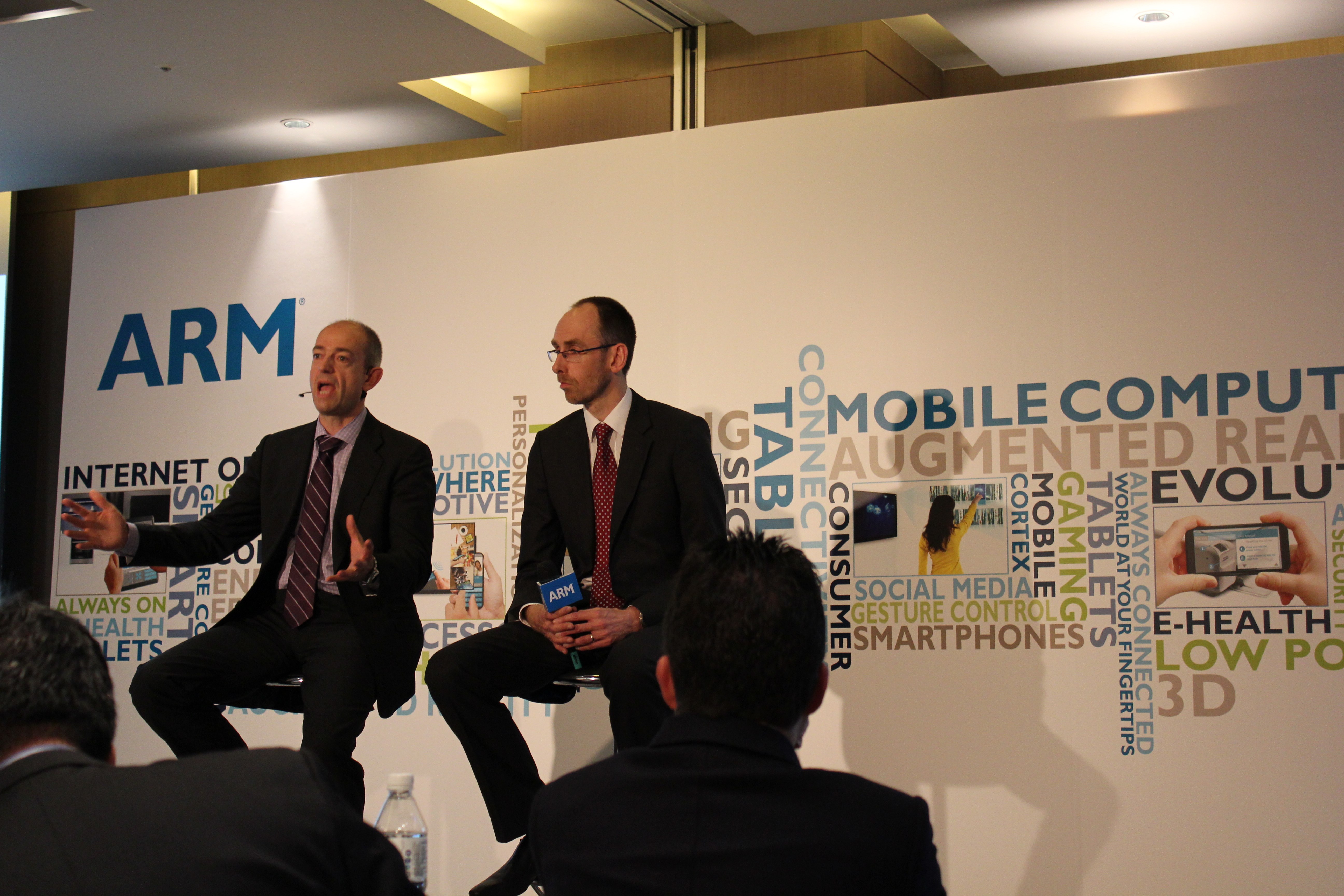Computex 2012: ARM is positioned for the post-PC era

ARM dominates the smartphone and tablet world, but it isn't the first name that comes to mind when you think of Computex. The massive tradeshow in Taiwan, which is going on this week, is largely devoted to the PC industry, and in particular to the many companies that manufacture and assemble the components that go into the world's desktops and laptops.
But the computing world has changed. Smartphones have become mini-computers. Tablets are eating away at laptop sales. And the release later this year of Windows 8 and Windows RT will for the first time put the x86 and ARM worlds in direct competition on a range of devices.
Perhaps that is why ARM decided to get a jump on the competition and hold a media event before the show began. The company didn't break any news, but executives talked about how in a post-PC era the company's technology is finding its way into everything from more powerful smartphones to laptops and servers.
"We've got nothing against PCs. We've all got one," said Simon Segars, an Executive Vice President and manager of ARM's processor division. "But they are playing a part of computing instead of being all of computing."
Although ARM is increasingly in competition with the x86 world, it has a very different business from either Intel or AMD. That's because ARM doesn't design or manufacture its own chips. Instead it develops building blocks, such as Cortex CPU cores and Mali graphics, and licenses them to chipmakers that design complete chips, which are typically manufactured at semiconductor foundries.
As process technology becomes more challenging and chip designs grow more complex, these foundries are straining to keep up with Intel's tick-tock innovation. Segars talked about how the company is working closely with foundries to keep pace. He said ARM customers are already shipping products based on 32nm and 28nm process technology and said there are a number of 20nm "tape-outs" including some processors using the high-performance Cortex-A15 core. (Tape-out is one of the last steps in the design of a chip before foundries began making sample chips.) Segars said the first 20nm products would enter production in 2013 and ARM is already working on 14nm technology.
Segar said the rate of innovation in mobile devices is accelerating as chipmakers boost performance and add new features. He predicted the trend toward dual- and quad-core processors will continue, as will the use of designs that use both lightweight and high-performance cores, something ARM calls big.LITTLE. Nvidia already uses a similar approach in its Tegra 3 processor. We'll also increasing use of heterogeneous systems with accelerators not only for 3D graphics but also for specific tasks such as media processing and data encryption. All of these are ways to provide higher system performance while using little power.
ARM talked about several trends that they believe will increase demand for its processor technology.
The first is lower cost smartphones and tablets for the next billion users. While Gartner estimates that 17 million tablets were sold last year, ARM says the true number is closer to 25 million since many cheap tablets aren't counted. Segars noted that there are at least 20 Android tablets from companies that "most people have never heard of" currently available on Amazon for around $100 or less. He predicted we will see more of these low-cost devices using Cortex-A9 and Mali graphics.
The second trend is BYOD (Bring Your Own Device) has helped ARM-based devices such as Apple's iPad get into companies through the back door. It's a "headache" for IT managers, but isn't going to stop, which is why companies are turning to tools such as Good Enterprise to manage these devices.
It isn't just smartphones and tablets. ARM has been gaining market share in embedded applications for consumer electronics. The chips used in products such as LCD TVs, set-top boxes, digital cameras and even digital signage are increasingly using powerful multi-core processors. "We're seeing the amount of computer power in these devices go up and up. [It is] a huge opportunity," Segars said.
The final category is traditional PC market. The upcoming release of Windows RT, the variant of Windows 8 designed to run on the ARM architecture, is an opportunity for ARM and its customers to reach new markets and challenge Intel and AMD. Many of the Windows RT devices will be slates, but there will also be convertible tablets with keyboards and even traditional clamshell laptops. In addition, ARM is targeting the server market with partners such as Applied Micro, Calxeda, Marvel and Texas Instruments.
There have been many reports that ARM believes it will take 20 percent of the laptop market by 2015. In a separate meeting, Segars offered slightly different numbers. He said ARM was hoping to capture 10-20 percent of the total market including tablets, PCs and servers by around 2015.
Much of the attention here at Computex is focused on Windows RT devices. Graham Budd, ARM's Chief Operating Officer, dodged a question about exactly when the Windows RT devices will ship. It could be that Windows RT devices will lag behind Windows 8 on x86 by a few weeks or months, but several companies are already showing early Windows RT tablets here at the show, so I'd expect to see many commercial Windows RT devices widely available in early 2013.
